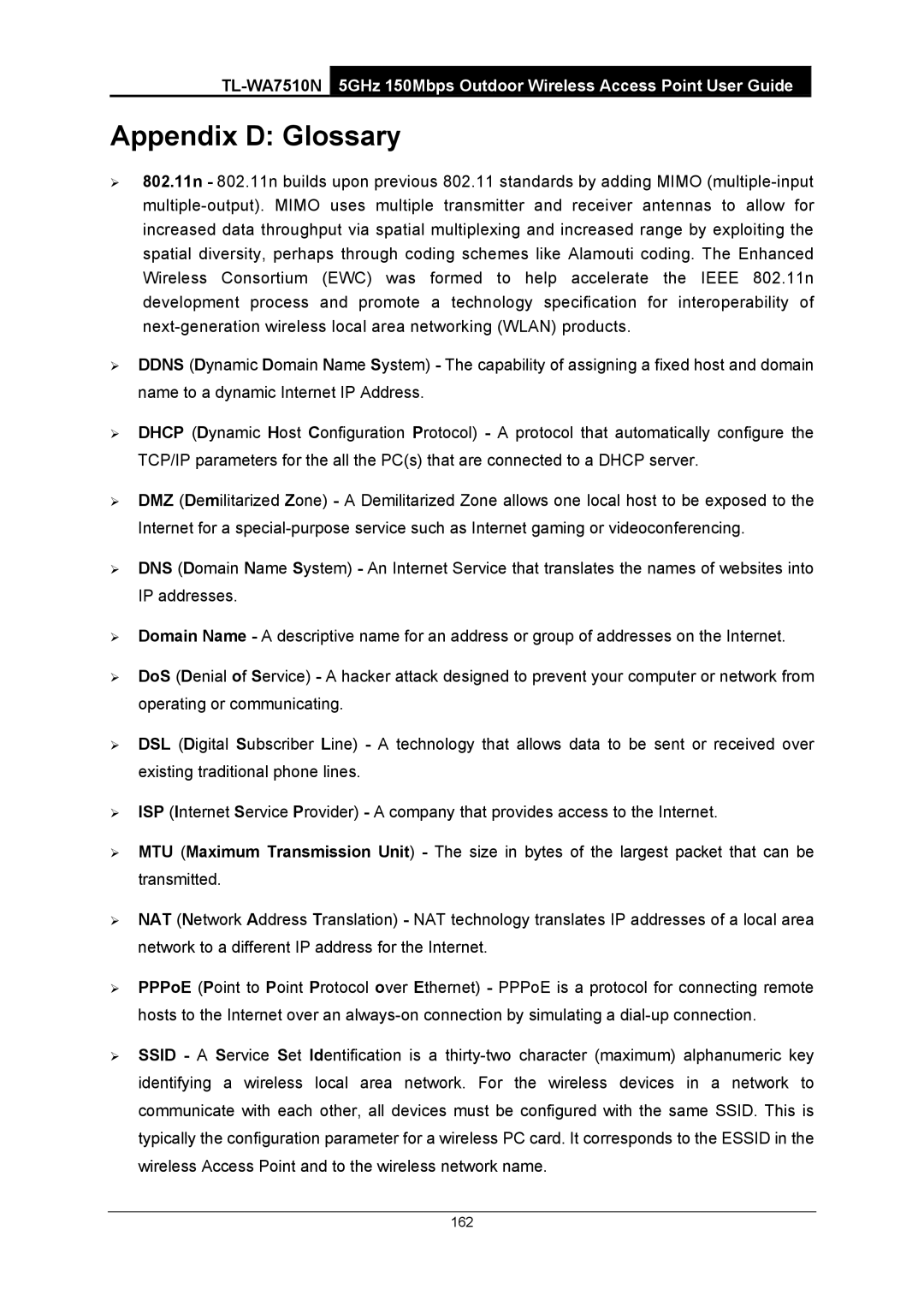
Appendix D: Glossary
¾802.11n - 802.11n builds upon previous 802.11 standards by adding MIMO
¾DDNS (Dynamic Domain Name System) - The capability of assigning a fixed host and domain name to a dynamic Internet IP Address.
¾DHCP (Dynamic Host Configuration Protocol) - A protocol that automatically configure the TCP/IP parameters for the all the PC(s) that are connected to a DHCP server.
¾DMZ (Demilitarized Zone) - A Demilitarized Zone allows one local host to be exposed to the Internet for a
¾DNS (Domain Name System) - An Internet Service that translates the names of websites into IP addresses.
¾Domain Name - A descriptive name for an address or group of addresses on the Internet.
¾DoS (Denial of Service) - A hacker attack designed to prevent your computer or network from operating or communicating.
¾DSL (Digital Subscriber Line) - A technology that allows data to be sent or received over existing traditional phone lines.
¾ISP (Internet Service Provider) - A company that provides access to the Internet.
¾MTU (Maximum Transmission Unit) - The size in bytes of the largest packet that can be transmitted.
¾NAT (Network Address Translation) - NAT technology translates IP addresses of a local area network to a different IP address for the Internet.
¾PPPoE (Point to Point Protocol over Ethernet) - PPPoE is a protocol for connecting remote hosts to the Internet over an
¾SSID - A Service Set Identification is a
162
